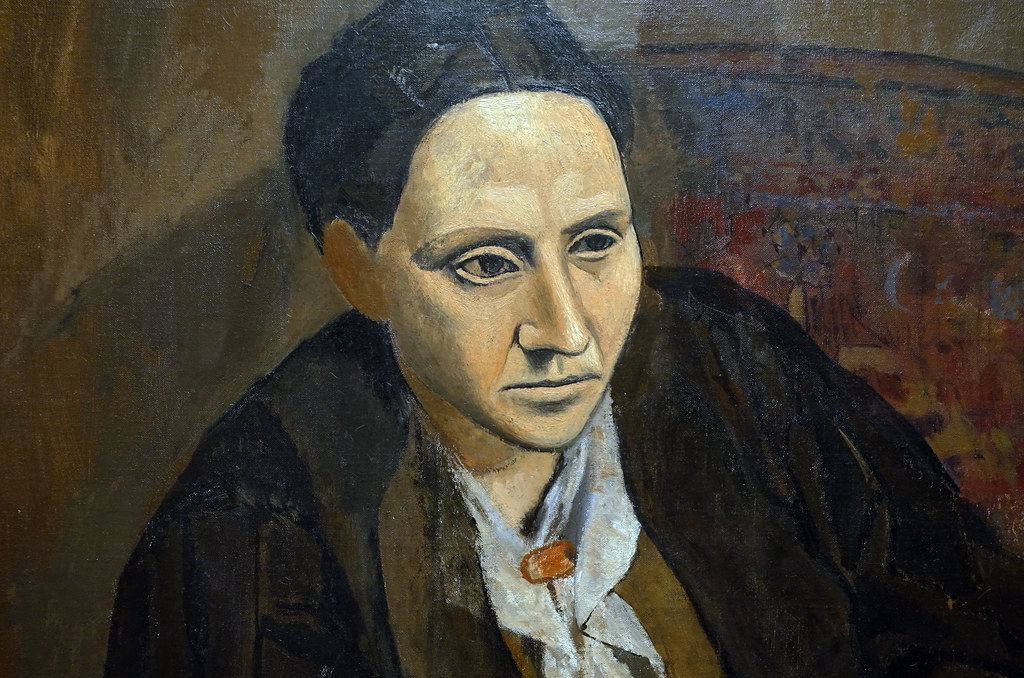
Author Profile | Gertrude Stein

English majors or minors will be exposed to a wide range of literary authors during their classes at Southern Adventist University. Part of being an English major is developing the ability to refer knowledgeably to the literary “canon.” The canon is a collection of traditionally important authors that readers across the centuries have continued to see as worth keeping! Southern English majors will learn from professors the literary virtues of these authors from an Adventist perspective.
English Matters will on occasion profile one of these authors. The article that follows is an example of this effort to inform from the Adventist perspective.
The Library of America is a publisher dedicated to keeping significant American authors in print through charitable, sustaining gifts. This publisher is trying to bring the public’s attention to authors relatively unknown and to produce high-quality, authoritative editions of American classics that will be of interest to collectors and general readers for generations. The company has created more than three hundred volumes since 1982.
Each time a new volume is produced, the company announces the publication with informational advertising, which can be helpful to the student of English, who may have never heard of the featured author.
A recent volume, entitled Gertrude Stein: Writings 1932-1946, collects significant works by this influential author and art connoisseur. Stein was born in the United States in 1874. From 1903 until her death in 1946 she lived in Paris. Paris was a haven for modernist radicals in the arts and letters. As a formal literary period, modernism flourished from 1914-1940.
Stein held large gatherings (salons) in her home, which many budding American authors attended—writers such as Ernest Hemingway, F. Scott Fitzgerald, Ezra Pound, and Sherwood Anderson. She called these young writers the “Lost Generation.” These young men had experienced the trauma of World War I and had rejected Western culture, including the Christian faith, and began intellectual odysseys in search of meaning. They found what meaning they could in artist expression and humanistic philosophies such as existentialism.
Not every modernist was a nonChristian, but every modernist sought meaning in the new world created by the death of millions of soldiers and civilians in the “Great War.” Stein rejected the answers provided by authentic Christianity. In doing so, she helped create literary modernism with her radical notions of meaning and style. What Cubism and Picasso did to art, Stein did to literature.
Through the influence of writers like Stein, Hemingway and others gave birth to a lean, imagistic, nearly emotionless, style. They felt that there was “meaning” in this sort of expression. Hemingway was famous for his simple prose and attributions in his literary works such as “he said” instead of the more expressive “he expostulated.” The English world has moved on from this style, but not back to the more “flowery” style of the nineteenth century in which “expostulations” would be common.
In a sense, none of us has escaped Stein’s literary influence, even Seventh-day Adventists.
Stein is famous for lines such as “There is no there there.” In this short sentence of five words, Stein uses the same word “there” in three grammatically different ways.
Stein shows the modernist tendency to irony and distortion of common meanings. In one of her short stories called “The Gentle Lena,” Stein uses the word “gentle” in such a way as to change the meaning of the word to something highly pejorative. “Gentle” comes to mean “weak,” “useless,” or “pointless.” Lena is a sad, pathetic human being always trying to do what others expect of her. She has no will of her own.
It is critical for Southern English majors to understand how current English written expression has developed.